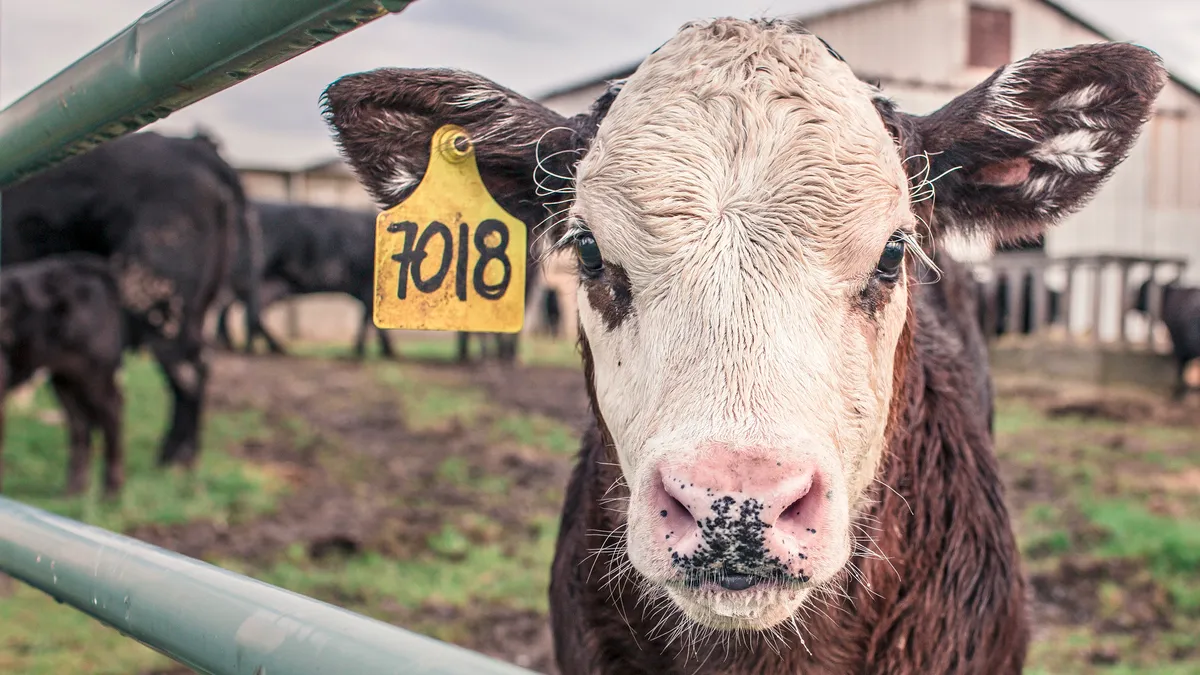Dive Brief:
-
U.S. and European Union officials signed a memorandum of understanding August 2 that could almost triple the amount of duty-free and hormone-free U.S. beef allowed annually into the 28 EU member countries during the next seven years, Foodmarket reported. The deal still has to be approved by the European Parliament.
-
Under the agreement, U.S. beef exports to the 28 member nations would be expected to increase from 13,000 metric tons each year to about 18,500 metric tons annually, with a total value of about $420 million, according to Meat + Poultry.
-
In a statement, CEO of the North American Meat Institute Julie Anna Potts thanked the Trump administration for prioritizing market expansion for U.S. meat products. There is more that needs to be done, she said. "It is critical to continue ongoing trade negotiations with China, to approve the United States-Mexico-Canada Agreement (USMCA) and to further talks with Japan."
Dive Insight:
If fully implemented, this agreement between the Trump administration and the EU could encourage additional production of beef cattle not treated with growth-producing hormones. The EU banned importation of such beef in 1989. The U.S. retaliated by imposing tariffs on certain EU products, although those have been suspended in recent years with the EU granting market access to U.S. beef raised without hormones.
Dan Halstrom, president and CEO of the U.S. Meat Export Federation, said in a statement the agreement will enhance access to a very high-value beef market in the EU.
"The agreement sends a very positive signal to customers in Europe who see a bright future for U.S. beef and to producers who are interested in expanding their non-hormone treated cattle business, but have grown frustrated as they struggled to recover the additional production costs," he said.
Cattle ranchers and processors have had a difficult time in recent years. Ongoing trade disputes have roiled the market, as have the burgeoning plant-based meat substitute segment, looming lab-based meat products and growing concerns over the sustainability of animal agriculture.
Despite these challenges, U.S. beef exports hit a record high last year. This is in part because of increased shipments to South Korea. According to CNBC, the U.S. enjoys lower tariff rates on beef exported to South Korea than competitors including Australia, New Zealand and Canada.
Meanwhile, the tariff war with China is crimping exports there. U.S. beef faces a 37% tariff from China right now — and Trump has threatened to impose another 10% tariff on $300 billion worth of Chinese goods starting September 1. Until the situation eases, the cattle industry will have a tough time cracking that massive market.>
While this trade agreement helps the industry on the whole, it won't necessarily benefit all producers equally. Just 17 U.S. slaughterhouses are permitted to export beef to Europe, according to a Reuters report citing U.S. Department of Agriculture records. They include those operated by Tyson Foods, JBS USA's Swift Beef Co., National Beef Packing Co. and Greater Omaha Packing.
The largest looming question is whether Europeans want more imported U.S. beef. The nation has had food safety concerns stemming from the hormones some U.S. producers have used, as well as outbreaks of mad cow disease — which prompted both China and Brazil to ban U.S. beef in 2003.
If the European Parliament approves the deal, food safety concerns are adequately addressed and no further problems emerge, more hormone-free U.S. beef exports could be positive for the industry. Better relations between the Trump administration and the EU could lead to increasing trade for other products as well, which would be good news — especially as the trade war with China threatens to deepen.















